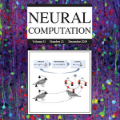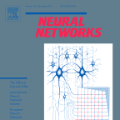Despite its better bio-plausibility, goal-driven spiking neural network (SNN) has not achieved applicable performance for classifying biological spike trains, and showed little bio-functional similarities compared to traditional artificial neural networks. In this study, we proposed the motorSRNN, a recurrent SNN topologically inspired by the neural motor circuit of primates. By employing the motorSRNN in decoding spike trains from the primary motor cortex of monkeys, we achieved a good balance between classification accuracy and energy consumption. The motorSRNN communicated with the input by capturing and cultivating more cosine-tuning, an essential property of neurons in the motor cortex, and maintained its stability during training. Such training-induced cultivation and persistency of cosine-tuning was also observed in our monkeys. Moreover, the motorSRNN produced additional bio-functional similarities at the single-neuron, population, and circuit levels, demonstrating biological authenticity. Thereby, ablation studies on motorSRNN have suggested long-term stable feedback synapses contribute to the training-induced cultivation in the motor cortex. Besides these novel findings and predictions, we offer a new framework for building authentic models of neural computation.
翻译:尽管目标驱动神经神经网络(SNN)的生物可变性更好,但目标驱动神经网络(SNN)在生物峰值火车分类方面没有达到适用性能,与传统的人工神经网络相比,几乎没有生物功能相似性。在本研究中,我们提议了由灵长类动物神经运动电路启发的SONN(SONN)反复出现的SONN(SONN),通过使用MOTSRN(MTERSRN)将峰值火车从猴子的初级运动皮层中解码,我们在分类精度和能量消耗之间实现了良好的平衡。MONTERN(M)通过采集和培养更多的cosine调控(这是运动皮层中神经人的一种基本特性)来进行沟通,并在培训期间保持其稳定性。除了这些新的研究结果和预测外,我们在猴子中、人口和电路水平上产生了额外的生物功能相似性相似性。因此,关于MONTERNNN(M)的对比研究显示,提出了长期稳定的反馈突变动神经模型的训练诱导培养,我们提供了一个新的模型的模型。</s>




